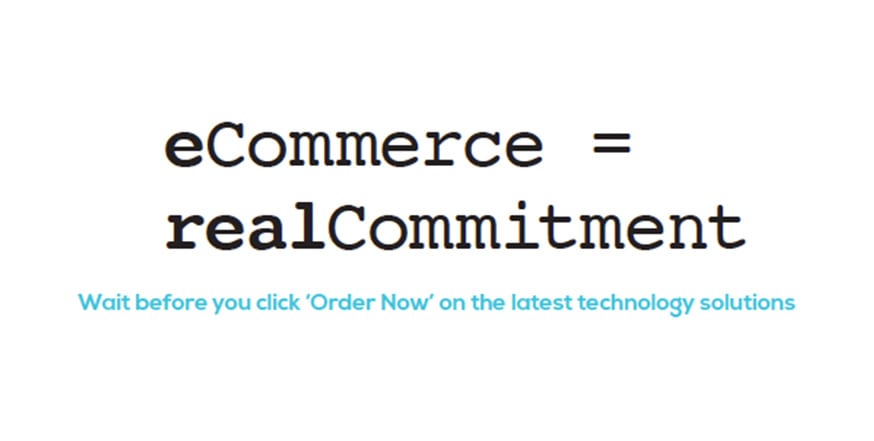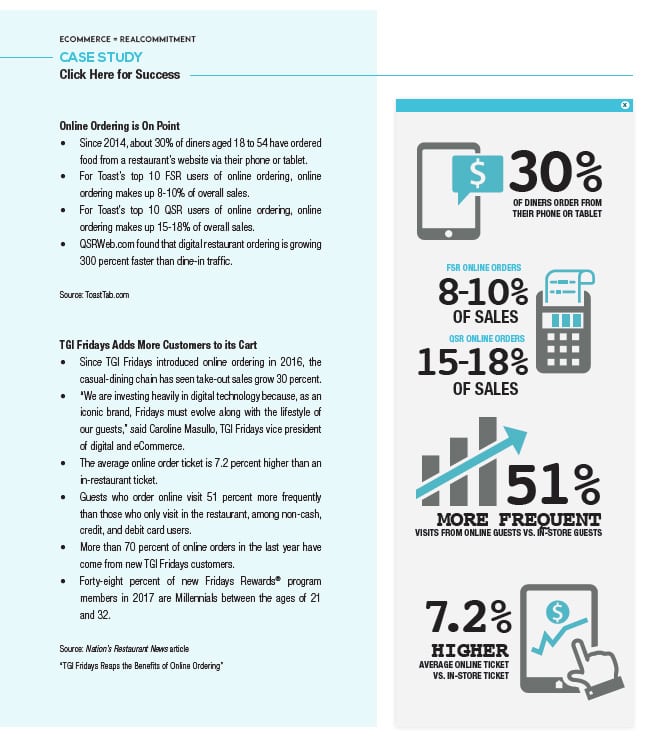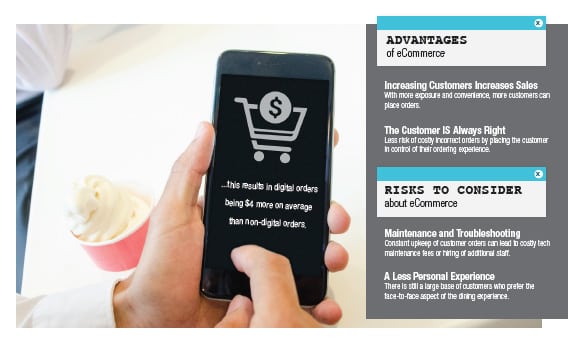
Wait before you click ‘Order Now’ on the latest technology solutions
Having a successful and profitable business is the number one goal entrepreneurs hope to achieve when first hanging that “Come in, we’re open!” sign in the window. Although, even after that goal seems to be already attained, businesses must continue to make necessary updates and changes to stay relevant and remain profitable. Sometimes smaller businesses can look to the tactics and business models of large franchises for inspiration of how to keep their businesses booming. However, sometimes small businesses are not equipped to handle some of these tactics. For those smaller shops and stores that lack the staff to properly manage and maintain a web presence, adding extra technology solutions may be taking a bigger bite than they are ready for.
One of the trends that is proving to be well-received from consumers is the convenience of placing their order online or through an app. Consumers find this to be extremely useful in a fast-paced and mobile-driven world. Ecommerce and other customer-driven solutions have both positive and negative factors that could affect the outcome that the strategy has on the business. It is important that an owner/operator understands all of these factors before rushing into anything prematurely.
The Cons of eComm
When the statement “I have good news and bad news” is spoken, often it is better to start with the bad news. So with that said, understanding the risks and possible negative effects associated with venturing into the world of eCommerce ordering is a vital place to start. Making a list of what the expected outcome would be and comparing that list to a list of cons can help determine fairly quickly if this concept is right for a business. If any of the risks could have a significant impact on realizing those goals, it must be taken under careful consideration.
Risk #1: Maintenance and Troubleshooting
With eCommerce solutions becoming popular across all types of businesses, simplified options have become more reasonable for small businesses to utilize. However, the reliability of these types of service providers can be uncertain. It is essential to research the reviews of their current customers. Even asking for additional reference contacts from the company could be beneficial as to not solely trust the reviews the company uses to promote its service, which can be biased. Contracting the service can also place most of the control of your eCommerce ordering process in the hands of another company. If there are issues that arise, the satisfaction of your customer base could suffer if the problem is not resolved quickly.
According to ShopKeep.com, an online information resource for small businesses specifically focused on POS and ordering systems, many consumers are still wary about giving out personal information—especially credit and debit cards—to online sources. The fact is, instances of fraud has increased with the growth of the eCommerce sector, so online stores have to have secure systems, encrypted payment software, and other safeguards against online fraud.
Another aspect to be concerned with is the added cost associated with contracting these types of services. To consider the benefit of adding this service, labor costs and profits must be carefully examined. Will additional staff be needed to accommodate these orders or maintain the system? Will the added profits account for the added costs?
Risk #2: A Less Personal Experience
While technology has made profound contributions to the efficiency of retail and restaurant operations, some consider it a less personable experience – especially if a business relies too heavily on its digital ordering. Many big name restaurant and fast food chains have added tablets inside of their establishments to offer consumers an easy in-store solution to fit the needs of digitally savvy customers, and these establishments have been profitable from this solution. However, when consumers choose to support local or smaller establishments, they may be enticed by a more personal atmosphere and experience. With regard to the world of desserts and pastries specifically, consumers are often interested in the process of making gelato and how it differs from ice cream. While aspects of these processes and differences can be listed on a digital ordering system, there is no guarantee they will be understood, and the ability for consumers to ask questions in real-time is not available.

The Pros of the Program
When the possible negative outcomes have been carefully considered, and proper actions and precautions have been measured, it is time to focus on how this concept can benefit the bottom line. In its article, “Restaurant mobile payments hit tipping point in 2017,” Nation’s Restaurant News, a reputable source for information that benefits all sectors of food service, found that industry analysts estimate the volume of mobile payments in the restaurant industry grew 75 percent in 2017. Having studies and trials of services implemented by larger companies can be a great resource for understanding the profitability of new concepts.
Advantage #1: Increasing Customers Increases Sales
Adding digital ordering options can reach customers who are in a hurry and often skip a trip to an establishment based on the possibility of long lines or slow service. Having a digital option that can create a grab-and-go alternative to fit their schedules and preferences can lead to more sales. ShopKeep.com reports that when surveyed, nearly half of store owners with a retail website stated that they noticed a significant increase in customers after hitting the digital arena, and 64 percent said they had a measurable increase in revenue.
During slower times for walk-in business, special limited-time offers for ordering online could act as incentives to increase cash flow during otherwise less profitable times.
Advantage #2: The Customer IS Always Right
Giving customers the opportunity to decide what they would like to order and giving them as long as they need to think about it will increase speed of service. There is also less chance for misunderstandings when it comes to orders which could lead to less refunds, exchanges, or unhappy customers. This also makes upselling easier and more prominent. Customers often dismiss in-person upsells that feel too much like a sales pitch from staff, but as a visual pop up or suggestion, their decision might be swayed in favor of the complementary product – which is very complementary to profit. As reported by the blog post “9 Advantages of Online Ordering for Restaurants” published by ToastTab.com, a retail POS provider, customers are more inclined to explore all of their menu options without feeling pressure to wrap up their order, and even end up spending more than they would when ordering over the phone or in person. This results in digital orders being $4 more on average than non-digital orders. With no line behind them, the pressure for guests to make speedy orders is gone, and they’ll be more inclined to get that extra item.
Always Choose ‘Review Cart’ Before Clicking ‘Buy Now’
Evaluating all the factors associated with adding an ecommerce option is crucial before adding something that may not be easily managed and become a nuisance more than an added value. But sometimes the gain outweighs the risk. Rushing into things simply because it fits other businesses can be harmful to a stable business model, but adapting to fit the evolving needs of customers can lead to a thriving strategy. The key is to maintain the integrity of the brand and the loyalty to customer demands. Listen to the consumers before jumping in head first—a simple survey of patrons that visit a shop or store could help weigh the pros and cons of this investment.

